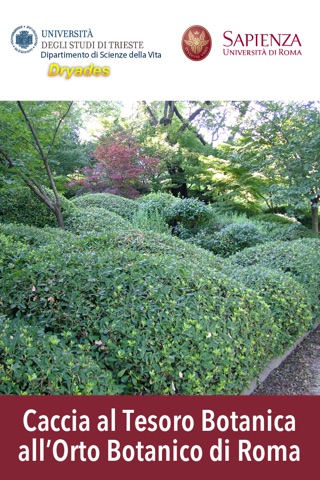
Caccia al Tesoro Botanico all'Orto Botanico di Roma app for iPhone and iPad
Developer: Divulgando Srl
First release : 21 Mar 2014
App size: 11.88 Mb
The Botanical Garden was installed in the gardens of the Corsini Palace, after thi was sold to the Italian State in 1883. Today, the palace hosts the Corsini Art Gallery and the Accademia dei Lincei with its rich library. The oldest part of the palace was commissioned in 1511 by Cardinal Riario and was subsequently enlarged by architect Giacomo della Porta between 1590 and 1594 for Abbot Galeazzo Riario. In 1736, the Corsini family bought the palace, after the election of Cardinal Lorenzo Corsini as a Pope with the name of Clemens XII (1730-1740). Architect Ferdinando Fuga carried out the restoration works, doubling the main façade. The rear façade, facing the gardens, is characterised by three projecting wings, the central one being occupied by a monumental staircase that, with its large windows, also serves as a belvedere over the gardens.
The activities consist of a treasure hunt based on the identification of woody plants , to be carried out with classes of 20-25 children. The treasure hunt takes place in the following steps:
1 ) The children are given a map of the area where the hunt will take place, in which the position of 10 species is indicated with coloured numbers. On each of the 10 plants there is a coloured cardbouard sign with the corresponding number.
2 ) The children are given a mobile device with the interactive version of the guide (usually one every 3 children , who will be working in a group).
3 ) Before the huntingstarts, a species is identified collectively with the help of a teacher/facilitator, to teach how the key and the device work.
4) From the starting whistle, the groups have 30-40 minutes to find the plants marked with numbered signs (orienteering) and to identify them. As soon as a group thinks to have identified a species, it runs to the teacher/facilitator: if the identification is correct, they can switch to another species, otherwise they have to go back and try to understand the error.
5) At the end, a whistle calls on all groups to the starting point, where the winner is proclaimed (the group that has correctly identified more species).
The creation of such a key is not simple: it requires a careful choice of species to include, of the characters to be used for the identification, and of the language used in the guide. All plants must be present in an area where one can keep an eye on the kids, they must have very different characteristics that do not require the observation of too difficult characters, they must be easily accessible (to avoid damage to flowerbeds). The terminology should be as simple as possible and the text of each dichotomy should be as short as possible (especially for children in the early grades of the primary school, who have just learned to read). The distinctive features should be adequately illlustrated, to make children understand intuitively the meaning of texts.



